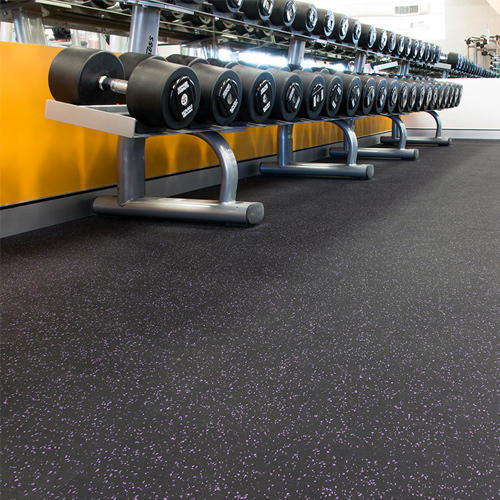In an era where sustainability is more than just a buzzword, consumers are looking for ways to make environmentally responsible choices without sacrificing style or performance. Enter recycled rubber flooring a durable, design-forward, and eco-friendly solution that’s gaining serious traction in residential, commercial, and industrial spaces alike.
Whether you’re designing a home gym, revamping your garage, or choosing flooring for a high-traffic workspace, recycled rubber flooring offers a unique blend of functionality and sustainability. But what makes it so special—and why is it being hailed as the flooring of the future?
Let’s dig in.
The Rise of Eco-Conscious Interiors
As climate change, waste reduction, and eco-conscious living continue to dominate headlines, the design world is responding. Architects and interior designers are prioritizing materials that are both beautiful and responsible. Homeowners and business owners alike are seeking out green solutions, and flooring is a prime area where sustainable choices can make a big impact.
Recycled rubber flooring, often made from post-consumer waste like old car tires, or post-industrial scrap, offers an ingenious way to turn waste into something useful, durable, and even stylish. Rather than ending up in a landfill, these materials are ground down, processed, and transformed into flexible, resilient flooring.
What Makes Recycled Rubber Flooring Sustainable?
There are several key factors that contribute to the eco-friendly credentials of recycled rubber flooring:
Waste Diversion
Old tires and rubber products are notoriously difficult to dispose of. By repurposing these materials, recycled rubber flooring helps reduce the volume of waste heading to landfills or incinerators—where it could otherwise leach chemicals into soil or emit harmful gases.
Low VOC Emissions
Many modern recycled rubber flooring products are manufactured with low or no VOCs (Volatile Organic Compounds), contributing to healthier indoor air quality. Look for certifications like FloorScore® or GREENGUARD for peace of mind.
Long Lifespan
Durability is a cornerstone of sustainability. Recycled rubber flooring can last 20+ years, which means fewer replacements, less material use over time, and a lower overall carbon footprint.
Energy-Efficient Manufacturing
Some manufacturers use low-energy processes and closed-loop recycling systems to minimize environmental impact throughout production.
Where Style Meets Sustainability
Once thought of as purely utilitarian, today’s recycled rubber flooring is anything but bland. New technologies and design innovations have brought a wide range of colors, textures, and finishes to the market—giving designers and homeowners more creative freedom than ever.
You’ll find options that mimic terrazzo, concrete, or speckled granite. Some brands offer custom color blends, allowing rubber flooring to seamlessly complement modern interiors. From sleek minimalist lofts to earthy yoga studios, recycled rubber flooring can fit any aesthetic.
It’s also highly adaptable. Use it in:
Home gyms and fitness studios
Playrooms or nurseries (soft and impact-resistant)
Garages and workshops
Retail spaces and offices
Basements and mudrooms
Schools and community centers
Health & Comfort Benefits
Beyond its green profile, recycled rubber flooring has several features that make it comfortable and safe:
Shock-absorbing: Great for reducing joint strain and cushioning falls
Slip-resistant: Especially important in wet or high-traffic areas
Sound-dampening: Helps reduce noise in gyms or multi-level homes
Thermal insulation: Warmer underfoot than tile or concrete
These features make it especially appealing in spaces where comfort, safety, and noise control are priorities.
The Cost Question: Is It Worth It?
You might be wondering—is recycled rubber flooring expensive? The answer: not necessarily.
It typically costs $2 to $8 per square foot, depending on thickness, finish, and installation type (tiles, rolls, or interlocking mats). While it’s often more affordable than hardwood or ceramic tile, it competes closely with mid-range vinyl or laminate flooring—with the added benefit of being eco-friendly and longer-lasting.
Plus, because it’s so durable and low-maintenance, you’ll save on repairs, refinishing, and replacements in the long run.
What to Look For When Buying
If you’re ready to invest in recycled rubber flooring, here are some tips for choosing the right product:
Check for certifications like FloorScore®, GREENGUARD, or Declare Label for transparency on environmental impact and health safety.
Choose the right thickness for your space—thicker options are better for gyms or heavy use.
Look into tile vs. roll format depending on the size and shape of your room.
Confirm recycled content percentages with the manufacturer (some offer up to 90% recycled material).
Final Thoughts
Recycled rubber flooring Dubai isn’t just a green alternative—it’s a smart, stylish, and durable option that aligns with modern values. As we move toward a more sustainable future, the materials we choose for our homes and businesses matter more than ever.
If you’re looking to reduce your environmental footprint without compromising on performance or aesthetics, recycled rubber flooring could be the perfect fit.
It’s time to step into the future—one recycled square foot at a time.

